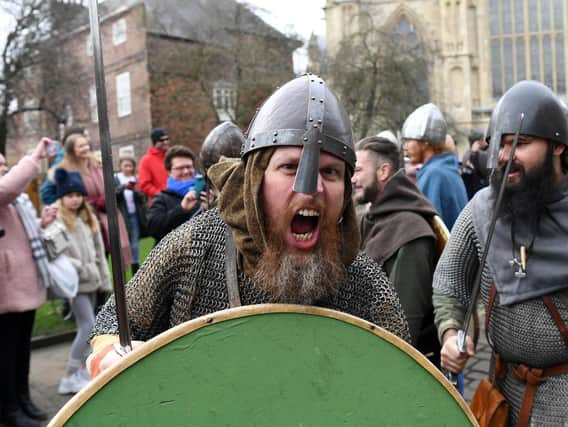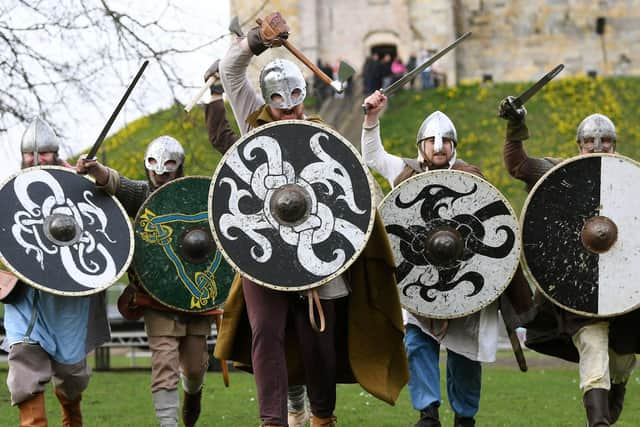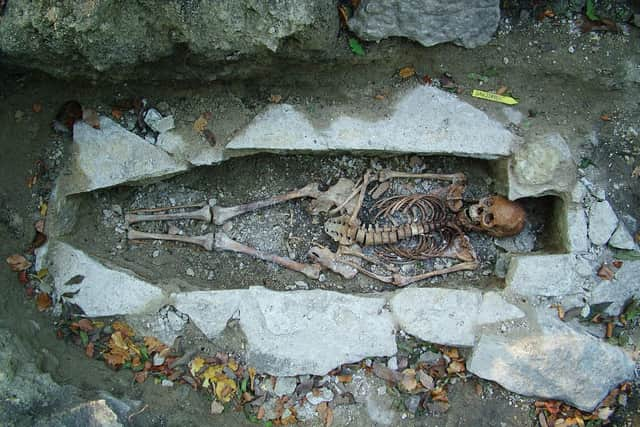Ancient DNA analysis adds weight to theories surrounding York's Viking history


Now new research may help to debunk this modern myth, in drawing a fuller picture from the bones of ancient history.
DNA sequencing of more than 400 skeletons from archaeological sites across Europe and Greenland has shed new light on the Vikings.
Advertisement
Hide AdAdvertisement
Hide AdNot all Vikings were from Scandinavia, it reveals, not all were blonde, and up to six per cent of people in the UK may carry Viking traces of DNA in their genes.


The six-year study, said authors, may mean the history books will need to be updated.
Professor Eske Willerslev, a Fellow of St John’s College at the University of Cambridge and director of The Lundbeck Foundation GeoGenetics Centre, University of Copenhagen, led the study.
He said: “We have this image of well-connected Vikings mixing with each other, trading and going on raiding parties to fight Kings across Europe because this is what we see on television and read in books – but genetically we have shown for the first time that it wasn’t that kind of world.
Advertisement
Hide AdAdvertisement
Hide Ad“This study changes the perception of who a Viking actually was - no one could have predicted these significant gene flows into Scandinavia from Southern Europe and Asia happened before and during the Viking Age.


“The history books will need to be updated.”
The word Viking comes from the Scandinavian term “vikingr”, meaning pirate, and the Viking story is entrenched in Yorkshire’s history.
The city of York was forged as the Danish kingdom of Jorvik following its capture by Ivar The Boneless in 866AD, and this history is much celebrated across the region today in festivals and events honouring ancient tales of Kings and war.
Sarah Maltby, director of attractions for York Archaeological Trust, said the research reinforces the findings it has made from excavations around York on a much larger scale. One Viking-age skeleton discovered in the city is believed to have been of African descent, for example.
Advertisement
Hide AdAdvertisement
Hide AdAt the York Coppergate dig, where the excavation site is now home to the Jorvik Viking Centre, no weapons were found but instead a selection of everyday objects such as shoes, musical instruments and crafting tools.
This reflects a time that was more peaceful than film and television portrayals may suggest, said Ms Maltby, and is often a surprise to visitors.
“We have known for some time that some of the people living in Viking-age York had genetic ancestry from outside Scandinavia,” she added.
“From the material that we have unearthed, we understand that the city was an ethnically diverse mixing pot of cultures, with the Vikings who settled here mingling with local Anglo Saxon communities, slaves from many different places – including Ireland – were traded here, and probably merchants from much further afield, with materials from the Middle East and Central Asia found here. “
DNA sequencing
Advertisement
Hide AdAdvertisement
Hide AdUnder the project, researchers sequenced the whole genomes of 442 men, women, and children from teeth and petrous bones found in Viking cemeteries.
The study, published in Nature, draws a map of travel with Vikings from what is now Norway travelling to Ireland, Scotland, Iceland and Greenland, those from Denmark to England, and from Sweden to the Baltic.
What it means is that Vikings were not just Scandinavian in their genetic ancestry, while it also allows scientists to draw an image of ancient Viking’s appearance and physical characteristics.
Dr Steve Ashby, a lecturer in the Department of Archaeology at the University of York who specialises in the Viking Age, said the paper's impressive collection of data provides the most detailed picture of Viking-Age genetics yet seen.
Advertisement
Hide AdAdvertisement
Hide Ad"It confirms much that we already suspected from the study of artefacts, language and documents, but gives us more detail on a lot of this," he said.
"It's becoming clearer than ever just how cosmopolitan the Viking world was, with large amounts of movement and contact between regions.
"Historical documents, for instance, tell us that Viking York was a very diverse place, and these results tell a similar story, with evidence for geneflow between regions as far separated as Scandinavia, southern Europe and Asia.
"The project also gives us tantalising glimpses into the detail of Viking life and society, such as the fact that Viking raiding parties could include several members of the same family. In all, the paper is a great example of what is possible when cutting-edge scientists work hand-in-hand with archaeologists and other historical specialists."
Advertisement
Hide AdAdvertisement
Hide Ad__________________________________________________________________
Support The Yorkshire Post and become a subscriber today.
Your subscription will help us to continue to bring quality news to the people of Yorkshire. In return, you'll see fewer ads on site, get free access to our app and receive exclusive members-only offers.
So, please - if you can - pay for our work. Just £5 per month is the starting point. If you think that which we are trying to achieve is worth more, you can pay us what you think we are worth. By doing so, you will be investing in something that is becoming increasingly rare. Independent journalism that cares less about right and left and more about right and wrong. Journalism you can trust.
Thank you
James Mitchinson